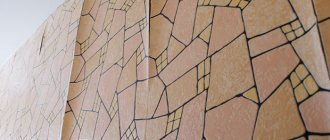Each owner, having a dacha or a local area, must allocate a place where he dumps all waste: garden, garden, kitchen, household, from animals, including pets, etc. As they rot, they form compost. The more diverse the composition of the waste, the better the quality of the resulting compost. But there is one condition - only healthy plant material is selected for composting. Otherwise, the compost turns out “dirty” and needs to be disinfected from diseases, cleared of weed seeds, and destroyed pests. So it turns out that weeds and diseased fruits and plants should not be put into compost? Can. But in this case, you need to do some extra work with the compost.
What can and cannot be put into compost?
What kind of compost is there?
Compost is a concentrate of fermented or rotted organic matter. Compost is prepared in two ways: aerobic and anaerobic. With the first method (aerobic), the compost heap is laid loosely (not compacted). It must be shoveled daily or every other day. A large influx of oxygen into the loose biomaterial ensures accelerated fermentation.
If the compost material is not cleaned, the compost turns out “dirty” and often becomes a spreader of diseases and weeds. Weed seeds and spores of fungal and other diseases do not die during the short period of its maturation.
The second method (anaerobic) takes longer, but allows you to preserve a larger amount of valuable nutrients needed by plants. At the same time, more diverse materials, including coarse organic material (dry thick branches, large wood chips, roots, etc.), can be placed in the compost heap, which increases the value of the resulting biofertilizer.
In the second method, the components are compacted well, on the contrary, reducing the access of air. Unlike the first method, there is no need to frequently shovel the contents of the pile. The temperature in the pile/compost heap is maintained at +20…+30 °C. But under such conditions, weed seeds and spores of fungal diseases also do not die.
How to properly start a compost heap
First, prepare the components and grind them to increase the area of penetration of bacteria. It is recommended to air dry freshly cut green grass to reduce the amount of nitrogen. This will prevent rotting and speed up ripening.
First of all, a layer of soil about 30 cm is laid on the bottom. Next, the layers are alternated so that for 3 parts of carbon-containing components there is one layer of nitrogen. It is recommended to water each layer with a solution of biological fertilizer - purchased in a store or prepared with your own hands - for this, yeast and fermented milk products are used.
For aerobic composting, the ingredients are placed loosely, without compaction, so that there is air between them and bacteria can multiply.
Video: How to properly make compost from weeds
After laying the components, after 2 - 3 days it is necessary to shovel the pile. The temperature at this moment is already beginning to rise due to the release of gases. Then you need to turn the mixture every two weeks. If necessary, pour water, but do not fill it, as this will lead to the death of microorganisms. The mixture should be slightly damp.
What can you put in compost to keep it “clean”?
A compost heap can contain one type or a mixture of household waste, which is processed by soil microorganisms into nutrients available to plants. The greater the variety of waste, the richer and better the compost will be.
A large amount of one type of waste forms depleted compost. In such a biofertilizer, the ratio of carbon and nitrogen (elements very important for plants) is disturbed, and a large number of other elements necessary for the normal development of plants are missing.
If there is an excess of carbon (large branches, dense stems of peppers, eggplants, dry bark, etc.), the composting process slows down until the excess carbon evaporates in the form of carbon dioxide. In this case, the composting period is extended. With excess nitrogen (which is rich in leaves, herbs, vegetables, fruits, food scraps, etc.), it evaporates from the compost and its losses can be up to 30%.
The more varied the ingredients, the richer the compost will be in nutrients.
For “clean” composting use:
- wood waste - branches, wood chips, shavings, sawdust, plant roots, bark and pieces of wood, but not painted with oil or other paints; they are used in the compost pit as drainage and ripper (to drain excess water and increase air flow);
- mown grass, cabbage leaves without signs of fungal and other diseases, healthy tops of carrots and beets, aerial parts of peppers and eggplants (healthy);
- carrion of fruits and vegetables (healthy);
- domestic animal manure, which, on the one hand, is a ready-made fertilizer, and on the other hand, serves as a heating ingredient that accelerates the decomposition process of other waste;
- kitchen waste, with the exception of food scraps that included meat and dairy products;
- edible mushrooms (overaged, wormy), shells of poultry eggs;
- paper waste (napkins and paper towels, single-layer cardboard).
The more varied the ingredients, the richer the compost will be in nutrients. © CAT
How to set up a composter?
The problem of arranging a compost pit is a pressing issue for those who grow fruits and vegetables on their own plot. After all, you want not only to get inexpensive natural fertilizer, but also to maintain the aesthetic appearance of your yard. Therefore, the composter is usually installed behind the main buildings and away from fruit trees.
- First of all, in the chosen place you need to clear a small plot of land, approximately 1.5x2 m, dig up the growth, remove the weeds and remove the soil to the depth of a shovel.
- It is better to make a fence around the pit from garden mesh or boards - this way the pile of waste will not fall apart.
- The bottom of the future composter is covered with small branches or a thick layer of sawdust, which act as drainage, after which fresh organic components can be thrown in.
The main “processors” of organic matter are earthworms; they must fall into the pit without obstacles. The compost must be ventilated, so the pile is periodically mixed and not compacted.
What waste cannot be used for “clean” composting?
You cannot put tops of potatoes, tomatoes, and cucumbers into the compost heap. In most cases, by the end of summer they are massively affected by late blight and other fungal diseases, the spores of which remain viable for a long time and, when exposed to favorable conditions (soil), infect plants.
Rotten apples (scab carriers), plums, cherries, cherries, peaches, apricots, and grapes should not be used in compost. They attract rodents with their smell. In addition, fruit and grape seeds rot very slowly, but young shoots form quickly, turning the compost heap into thickets of new weeds.
You cannot put weeds with seeds and roots into compost. Seeds, even of immature flowers and inflorescences, ripen in the soil, retain their viability and are sown in the field with compost.
You cannot put herbs with tenacious roots (rhizomatous, root shoots) into compost, which retain their viability even after partial rotting.
In addition, you cannot add to compost:
- bones of animals and fish (will attract rodents);
- moldy bread (mold can get into the soil and infect garden plants);
- weeds that were gotten rid of with herbicides (residues of undecomposed pesticides are soil pollutants);
- multilayer glued cardboard, painted wood, glossy paper with color printing, polyethylene and plastic waste (only organic waste can be put into compost);
- feces of pets and the contents of cat litter boxes (waste may contain toxoplasma parasites that are dangerous to the health of children and adults).
All ingredients listed and some others that we may not have mentioned in this list must be destroyed. It is better to burn them and use the ash as fertilizer. Plastics and materials containing heavy metals must be disposed of separately.
The most acceptable way to disinfect and clean compost from pests is “hot” composting. © kate
Methods for preparing fertilizer
There are two different ways to make compost at home. In a sealed composter without oxygen and in an open compost heap. In the first case, anaerobic bacteria will do all the work.
These are microorganisms that do not like sunlight, high temperatures and die when exposed to air. If you use them to decompose components, the compost heap must be hermetically sealed and not opened until the fertilizer has matured.
The aerobic method does not require a sealed container, but is more labor-intensive, since the process requires shoveling the mixture several times to ventilate it. With such care, bacteria multiply faster and process plant residues more intensively. It is necessary to monitor the humidity level so that the compost pile does not dry out.
Vermicompost
This method of preparing fertilizer is the fastest, since in addition to bacteria, plant residues are processed by red Californian worms.
This species is the most efficient, as it reproduces 500 times faster than ordinary worms, but in order to produce huge numbers of cocoons, they need to feed a lot. If environmental conditions correspond to the needs of a given species, then ready-made fertilizer can be made not only for yourself, but also for sale.
Conditions of detention:
- Warm room with a temperature of 18 - 20 degrees.
- Equipped pile with wet raw materials and air access.
- Constant supply of plant residues for nutrition.
Vermicompost is the most nutritious organic fertilizer, which requires three times less than other fertilizers. It is completely absorbed in a short time, so it does not have time to be washed out by rain.
Where to set up a composter
The compost heap box must be hidden from sunlight, which negatively affects the growth of bacteria. This could be a shade tree or a canopy with a roof. It is advisable that the box has a lid to prevent precipitation from getting inside.
The bottom of the composter is concreted or left open. For a stationary pile, it is better to make a solid floor, since during the maturation process, nutrient fluid flows out, which must be preserved, since it is rich in nitrogen. As an option, they are lined with straw, peat or soil.
You can make a box yourself from boards, mesh or slate, or you can buy a ready-made container. In the first case, it is easier to care for the compost, but only the aerobic composting method is available. Raw materials for both aerobic and anaerobic rotting are placed in plastic containers. But it is more difficult to care for because the container has a small hatch.
How to make “dirty” compost clean?
If all waste is dumped into the compost heap, including those listed above from the “black list,” the compost turns out to be “dirty” and needs to be disinfected.
The most acceptable way to disinfect and clean compost from pests is “hot” composting. With this method, the compost heap needs fresh manure or material containing a large amount of nitrogen. The release of excess nitrogen in the form of ammonia causes a “warming” effect.
Mixing the ingredients every 3-4 days to increase the access of oxygen, sufficient humidity of the mass (within 60%), contribute to a very rapid increase in the temperature inside the compost heap to +65...+75 °C. Under these conditions, weed seeds, fungal disease spores, helminth eggs, and pest larvae die. At the same time, most of the beneficial and pathogenic microflora die.
With the end of “burning out” of the excess “warming” ingredients, the temperature of the pile/compost heap drops to +20...+25 °C. From this time on, the compost heap is stirred less frequently - every 12-14 days. The normal fermentation process is underway.
To restore positive microflora, the compost heap can be moistened with working solutions of the drug Baikal EM-1 or others.
Care of aerobic and anaerobic composting soil
With anaerobic composting, human intervention is not required. The main thing is that the temperature outside corresponds to the mode of functioning of the bacteria. In winter, the container is moved to a warm room.
If ripening occurs with access to air, then the more air there is, the faster the compost will be ready. To do this, loosen the components with a pitchfork every 2–3 weeks In hot weather, the pile is watered with clean water without chlorine. To prevent rain from getting inside the compost bin, it is covered with film or a piece of plastic.
How to speed up composting
There are several tips that tell you how to make compost at your dacha much faster than standard deadlines. You can speed up the fermentation process with the help of available tools and proper care.
Composter with three compartments Source dacha.help
For quick compost you need :
- daily morning watering of the compost heap;
- warm water with regular addition of stimulants and other substances that accelerate ripening;
- constant mixing of the layers of the total mass;
- insulate the compost in winter, when the cold sets in: to do this, pour peat on top of the heap and cover it with large leaves of plants, which will keep the heat inside the heap.
Thanks to daily care, the fertilizer will begin to decompose much faster, which means it will be ready earlier. The main thing is not to rush to get it until it is completely ready.
Requirements for placement
There are two criteria for choosing a location. The first is how far away the compost bin is. Remoteness is necessary so that the owner of the site and his neighbors do not get an unpleasant odor. The second factor is the inapplicability of the site for other purposes. You need to choose an unfavorable area of soil, in a dark place where it is impossible to grow any plants normally.
In addition, the area under the box must be level to avoid stagnant water. Regarding water, you must maintain a distance of at least 25 meters from the water source on the site. You should not place a compost pit near trees, because the toxins released during rotting can have a detrimental effect on the plant.
Also, as mentioned earlier, you should not choose well-lit places; it is better to place the box somewhere in the shade.
Making a compost pit at your dacha with your own hands
The process of creating a compost pit depends on the chosen design option. It is important to understand that a self-made compost box will last longer than a purchased one, because wood or concrete are stronger materials than plastic.
The easiest to implement is the first option. It is worth somehow dividing the hole in the ground into two parts so that there is space for old and new compost. However, results may not appear for a long time, since being in the ground, the coolness of the waste reduces the ability of the waste to rot.
You can use some old bins to sort your compost.
Briefly about the main thing
A compost heap at the dacha is necessary for preparing your own organic fertilizer. It requires proper construction and selection of suitable materials. Quick compost is used when planting new plants or to accelerate the growth of other representatives of the plant world. It is important to choose the right location before laying the pile.
To know how to make compost at your dacha, you need to familiarize yourself with all the rules for laying a compost heap. The rate of decomposition of organic substances according to all the rules depends on the constituent components and the laying of layers. If problems are detected, it is necessary to adjust the irrigation system or add other elements to the compost composition. If everything is done correctly, then in just a few months you can get high-quality country compost.
Tips for proper use
To use the pit without problems, you need to know some details that will improve the quality of the fertilizer. Quite often it is necessary to stir the contents of the pit to allow oxygen to penetrate and promote decay.
It is worth moistening the waste in the pit, the main thing is not too much water. A small amount of moisture will promote rapid decomposition. You can cover the hole with black film to create a “greenhouse effect” inside the box. But you need to make holes to allow air to circulate.
If everything is done correctly, steam and increased temperature will appear in the box - this is the result of the rotting process. You also need to pay attention to the bottom layer of compost in the autumn. The top layer is not ready yet, but take out the bottom layer and lay it separately.
Making a compost bin is a difficult process. However, for garden owners, this is an indispensable opportunity to make their own fertilizer from natural ingredients.
Design features
A compost bin can be made in many ways, but for any design you need to prepare the space. It is necessary to remove the turf and loosen the soil in the selected area to a depth of 30 cm. The larger the hole, the faster rotting will occur. Basically, the best size ratio is: length - 2 meters, width - 1.5 meters, height - at least 1.1 meters.
For the floor, it is best to choose bare earth; you should not cover it with materials that are not capable of permeating moisture. You can cover the box with a lid, so the contents will rot faster.
Problems preventing compost from maturing
In some cases, nature interferes with the ripening of fertilizer under natural conditions. In addition, negative interference from external factors will indicate improper care of the compost. An erected compost heap may encounter the following problems that will need to be addressed immediately:
- Ants . Large numbers of these insects appear in compost if it lacks moisture. You can drive out ants by shoveling the mixture daily and watering more frequently.
- Midges . Excess moisture always breeds small midges. Accordingly, if these parasites appear above ripening fertilizers, it is necessary to stop watering and dry for several days in the sun or by adding wood shavings.
- Unpleasant smell . If an unpleasant odor begins to emanate from the compost heap, this means that the permissible norm of plant substances has been exceeded or their layer is very thick. To correct the problem, you need to dilute the compost with other components.
- No changes . As more time passes, the heap should get closer and closer to a finished state. If no movement is detected, this may mean the compost has completely dried out. Therefore, you need to follow the watering regime daily.
Layering
To know how to properly make a compost pit, you need to become familiar with the basics of laying layers for compost. Failure to follow the rules may slow down the ripening of the fertilizer. The main thing is that the total organic layer of compost does not exceed 30 cm, otherwise decomposition will be difficult.
Care and watering Source udobreniya.net
See also: Catalog of companies that specialize in landscape work of any complexity
The components of each layer are thoroughly mixed, and after laying the first row, special lime is poured. Quick compost can be made from the following layers:
- Green manure . This group of plants is the very first in laying the compost heap. This is explained by the fact that these organisms are saturated with a large amount of protein, which means they decompose the fastest. The main thing is to lay the material dry.
- Straw . It is responsible for the porous structure of the compost and provides it with a sufficient level of moisture. Before laying layers, the substance must be thoroughly crushed and mixed with other components. For example, with food waste or other plants.
- Wood shavings . The material decomposes on its own very poorly and slowly. Therefore, it is important to use it in combination with other fertilizers. You can mix wood shavings with weeds, manure or bone meal. The main disadvantage of such a substance is the low level of nitrogen, which is very important for creating quick compost.
Layers of a compost heap Source fermer.blog
- Foliage . Compost at the dacha can also be prepared from fallen leaves. It should not be too wet or dry. However, there are few useful substances in such material. Therefore, leaves need to be combined with other plants and laid in very thin layers.
- Manure _ It is one of the most common catalysts for creating compost. This material is rich in useful substances that help the compost mass decompose quickly. It is laid in several middle layers and then sprinkled with earth to slightly soften the pungent odor.
- Tree bark . There is much more nitrogen there than in the chips. But this amount is not enough to produce the required number of beneficial microorganisms. Therefore, you need to use animal manure or bird droppings as an additive.
Example of laying layers Source homeli.ru
- Sheets of paper . Paper contains nutrient-rich cellulose. When decomposed, it releases substances useful for fertilizing plants. Before laying the compost heap, sheets of paper are shredded and placed under a water or herbal solution.
- Food waste . In combination with wood shavings, they can organize a rapid decay process, which accelerates the production of beneficial microorganisms. The main thing is to thoroughly mix the waste and do it regularly after laying the pile.
Design options
There are 4 options for building a compost pit:
- Depression in the ground. You can dig a hole yourself and fill the bottom with hay. After each replenishment, you will need to fill the contents with fresh grass. However, there is a drawback - the lack of heating, which is necessary to increase the rate of decay.
- Wooden structure. To make a wooden box for compost, the dimensions indicated earlier are suitable. The supports need to be dug 20 cm into the ground; when creating it, it is worth leaving ventilation holes. Using wooden leaves, you can divide the box in two, one for old and one for new compost. You can paint the walls.
- Concrete pit. At a depth of about 70 cm, a trench measuring 2 by 2.5 meters is dug. You need to set up the formwork, the wall thickness is about 10 cm. You need to pour the concrete, and remove the formwork when it hardens. You can close such a pit using an iron shield or film.
- Plastic box. You can purchase a ready-made compost bin from a garden supply store, but these bins are often flimsy. However, the price is captivating; they are usually cheaper than other options.











